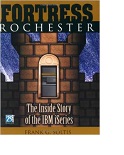![]() The Security Now Podcast number 497 dealt with the topic of Vehicle Hacking. It was fairly interesting, if a bit too light on the really interesting thing which is what actually went on in the vechicle hack that was apparently demonstrated on US national television at some point earlier this year (I guess this CBS News transcript fits the description). It was still good to hear the guys from the Galois consulting firm (Lee Pike and Pat Hickey) talking about what they did. Sobering to realize just how little even a smart guy like Steve Gibson really knows about embedded systems and the reality of their programming. Embedded software really is pretty invisible in both a good way and a bad way.
The Security Now Podcast number 497 dealt with the topic of Vehicle Hacking. It was fairly interesting, if a bit too light on the really interesting thing which is what actually went on in the vechicle hack that was apparently demonstrated on US national television at some point earlier this year (I guess this CBS News transcript fits the description). It was still good to hear the guys from the Galois consulting firm (Lee Pike and Pat Hickey) talking about what they did. Sobering to realize just how little even a smart guy like Steve Gibson really knows about embedded systems and the reality of their programming. Embedded software really is pretty invisible in both a good way and a bad way.
Continue reading “Security Now on Hacking Vehicles – A Bit of Let-Down”
 I have been thinking about the role and prestige of testing for the past several years. Many things I have read and things companies have done indicate that “testing” is something that is considered a bit passe and old-school. Testers are dead weight that get into the way of releases, and they are unproductive barnacles that slow development down. Testers can all be replaced by automatic testing put in place by brilliant developers. The creative developer types are the guys with the status anyway. I might be exaggerating, but there is an issue here. I think we need to be acknowledge that testers are a critical part of the software quality puzzle, and that testing is not just something developers can do with one hand tied behind their back.
I have been thinking about the role and prestige of testing for the past several years. Many things I have read and things companies have done indicate that “testing” is something that is considered a bit passe and old-school. Testers are dead weight that get into the way of releases, and they are unproductive barnacles that slow development down. Testers can all be replaced by automatic testing put in place by brilliant developers. The creative developer types are the guys with the status anyway. I might be exaggerating, but there is an issue here. I think we need to be acknowledge that testers are a critical part of the software quality puzzle, and that testing is not just something developers can do with one hand tied behind their back.


 I recently made my first acquaintance with Windows 8, having bought a new Sony ultrabook for the family. Including a touch screen. The combination of the touch-based interface and the phone-like look of Windows 8 even on a PC has led me to think about the (unconscious) expectations that I have come to have on how systems behave and how services are accessed, from how smart phones and tablets have come to work in the past few years. In particular, where are web-based services going?
I recently made my first acquaintance with Windows 8, having bought a new Sony ultrabook for the family. Including a touch screen. The combination of the touch-based interface and the phone-like look of Windows 8 even on a PC has led me to think about the (unconscious) expectations that I have come to have on how systems behave and how services are accessed, from how smart phones and tablets have come to work in the past few years. In particular, where are web-based services going?
 I have a silly demo program that I have been using for a few years to demonstrate the
I have a silly demo program that I have been using for a few years to demonstrate the  Debugging – the 9 Indispensable Rules for Finding Even the Most Elusive Software and Hardware Problems
Debugging – the 9 Indispensable Rules for Finding Even the Most Elusive Software and Hardware Problems